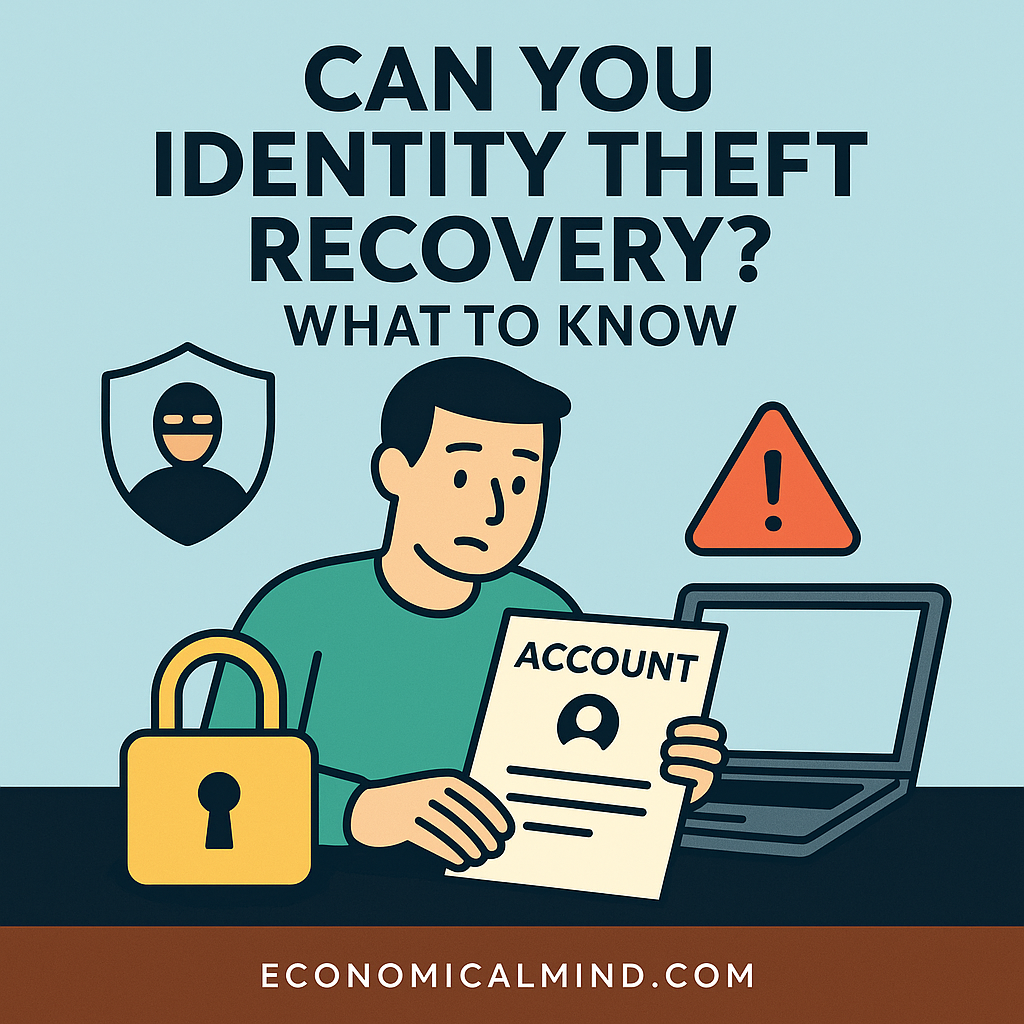
Identity theft can happen to anyone — and when it does, it’s overwhelming. But recovering your financial security is possible with the right steps and a calm, organized plan. Understanding how identity theft works and what to do next can save you time, money, and stress.
What Is Identity Theft?
Identity theft occurs when someone uses your personal information — like your Social Security number, credit card, or bank account — without permission to commit fraud or steal money.
Example:
A thief opens a new credit card under your name or files a fake tax return using your Social Security number.
The good news? There’s a clear path to recovery — and laws that protect you.
Common Types of Identity Theft
- Financial Theft – Someone uses your credit or debit card to make unauthorized purchases.
- Tax Identity Theft – A fraudster files a fake tax return to claim your refund.
- Medical Identity Theft – Criminals use your information to get healthcare or prescriptions.
- Employment Theft – Your identity is used to gain employment or benefits illegally.
- Account Takeover – Hackers gain access to your email or online banking and lock you out.
Pros of Acting Quickly After Identity Theft
1. Limits the Damage
The faster you act, the easier it is to contain fraudulent activity.
Example: Reporting a stolen credit card within 48 hours limits your liability to $50 or less.
2. Protects Your Credit Score
Immediate response can prevent long-term harm to your credit reports.
3. Strengthens Legal Protection
Having documentation and a recovery plan helps you dispute unauthorized accounts effectively.
4. Prevents Recurrence
Once you secure accounts and change passwords, future attacks are less likely.
5. Provides Peace of Mind
Having a step-by-step process brings back a sense of control.
Cons of Ignoring Identity Theft
1. Financial Loss
Unmonitored fraud can lead to drained bank accounts or maxed-out credit lines.
Fix: Report suspicious activity immediately to your bank and credit bureaus.
2. Long-Term Credit Damage
Unresolved fraud can lower your score and hurt your ability to borrow.
Fix: Dispute fraudulent accounts and add a fraud alert right away.
3. Emotional Stress
Identity theft is mentally exhausting.
Fix: Stay organized and use the FTC’s official recovery plan to stay focused.
4. Legal Issues
Fraudulent debts or employment can cause IRS or law enforcement complications.
Fix: Keep detailed records and police reports for verification.
5. Time-Consuming Recovery
The longer you wait, the more steps you’ll need to take.
Fix: Start the recovery process the same day you notice the issue.
Best Practices for Identity Theft Recovery
1. Contact the Affected Institution
Call your bank, credit card company, or lender to freeze and close compromised accounts.
2. Place Fraud Alerts and Credit Freezes
Contact one of the major credit bureaus — Equifax, Experian, or TransUnion — to add a fraud alert. This notifies others to verify your identity before issuing new credit.
3. File a Report with the FTC
Go to IdentityTheft.gov to create a recovery plan and official report.
4. Report to Local Police
Having a police report can help with disputes and legal protection.
5. Review Your Credit Reports
Check for unfamiliar accounts or inquiries using AnnualCreditReport.com.
6. Change Passwords and Enable Two-Factor Authentication
Secure your email, bank, and shopping accounts immediately.
7. Notify the IRS
If your Social Security number was used, file IRS Form 14039 (Identity Theft Affidavit).
8. Monitor Accounts Regularly
Use alerts or identity monitoring services to detect suspicious activity early.
9. Dispute Any Fraudulent Charges
Send written disputes to creditors and keep copies of all communications.
10. Stay Vigilant Long-Term
Identity theft recovery isn’t one-time — keep monitoring for at least a year after the incident.
Key Takeaway
Recovering from identity theft takes patience, but every step brings you closer to normalcy. Acting fast, staying organized, and protecting future data can help you regain control and confidence.
